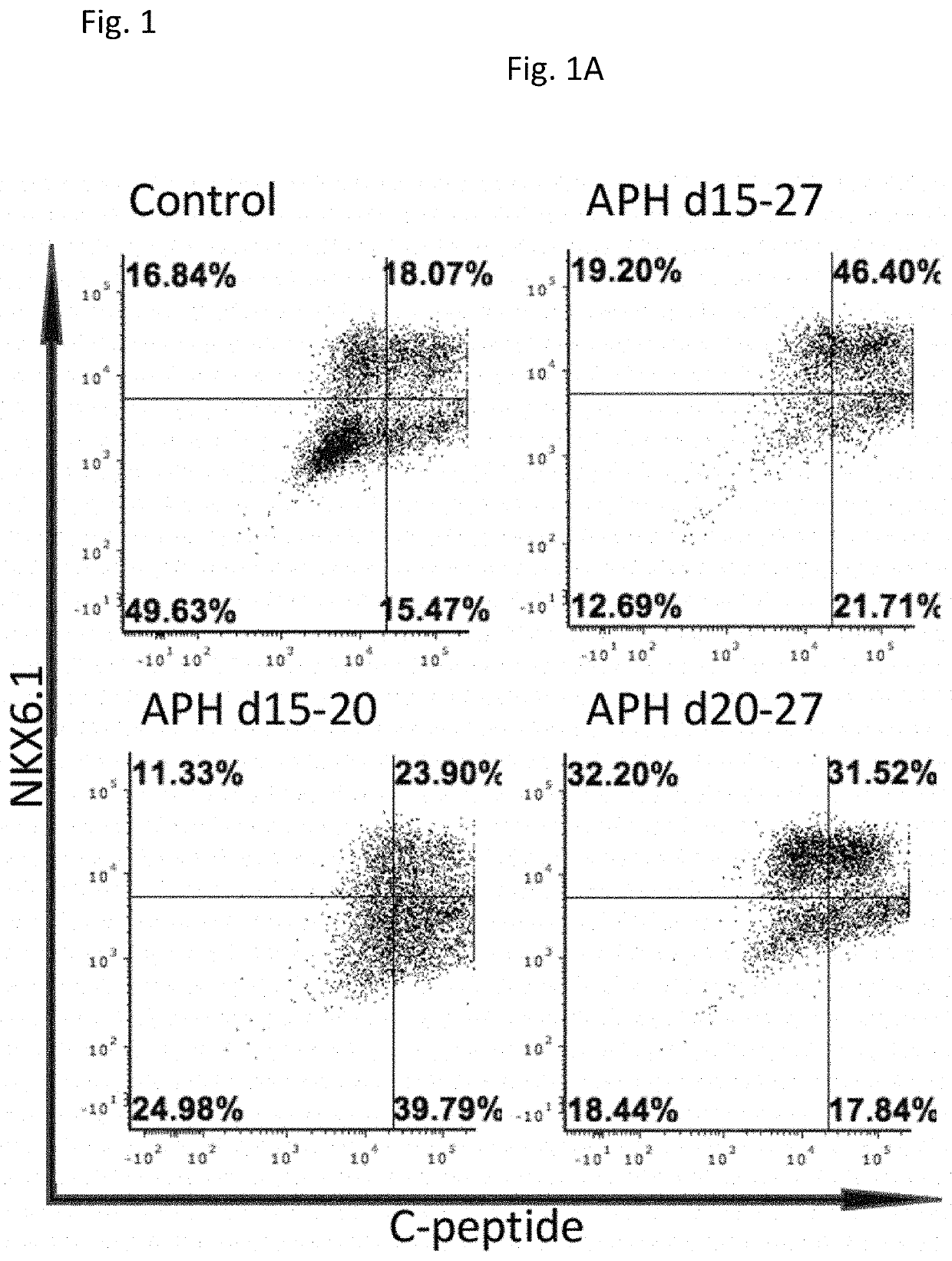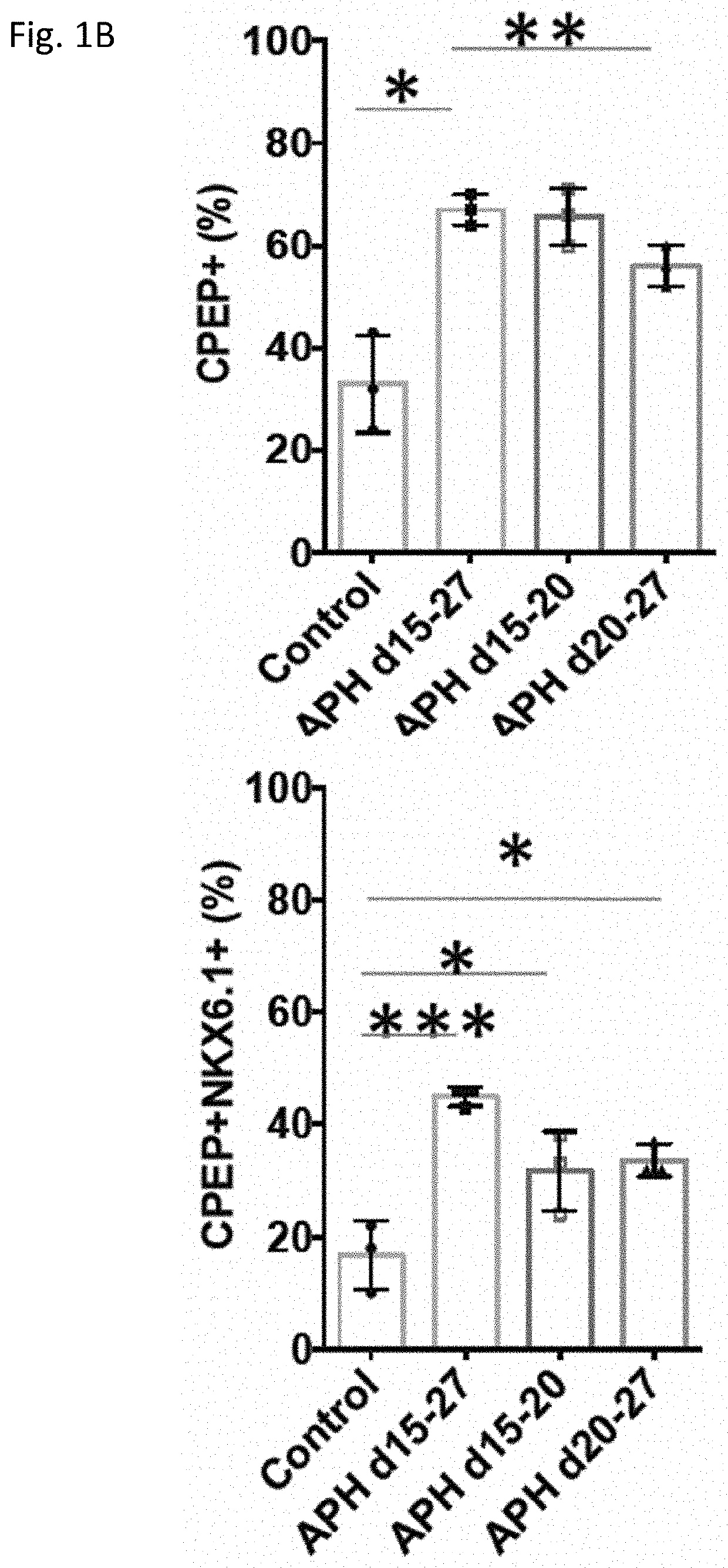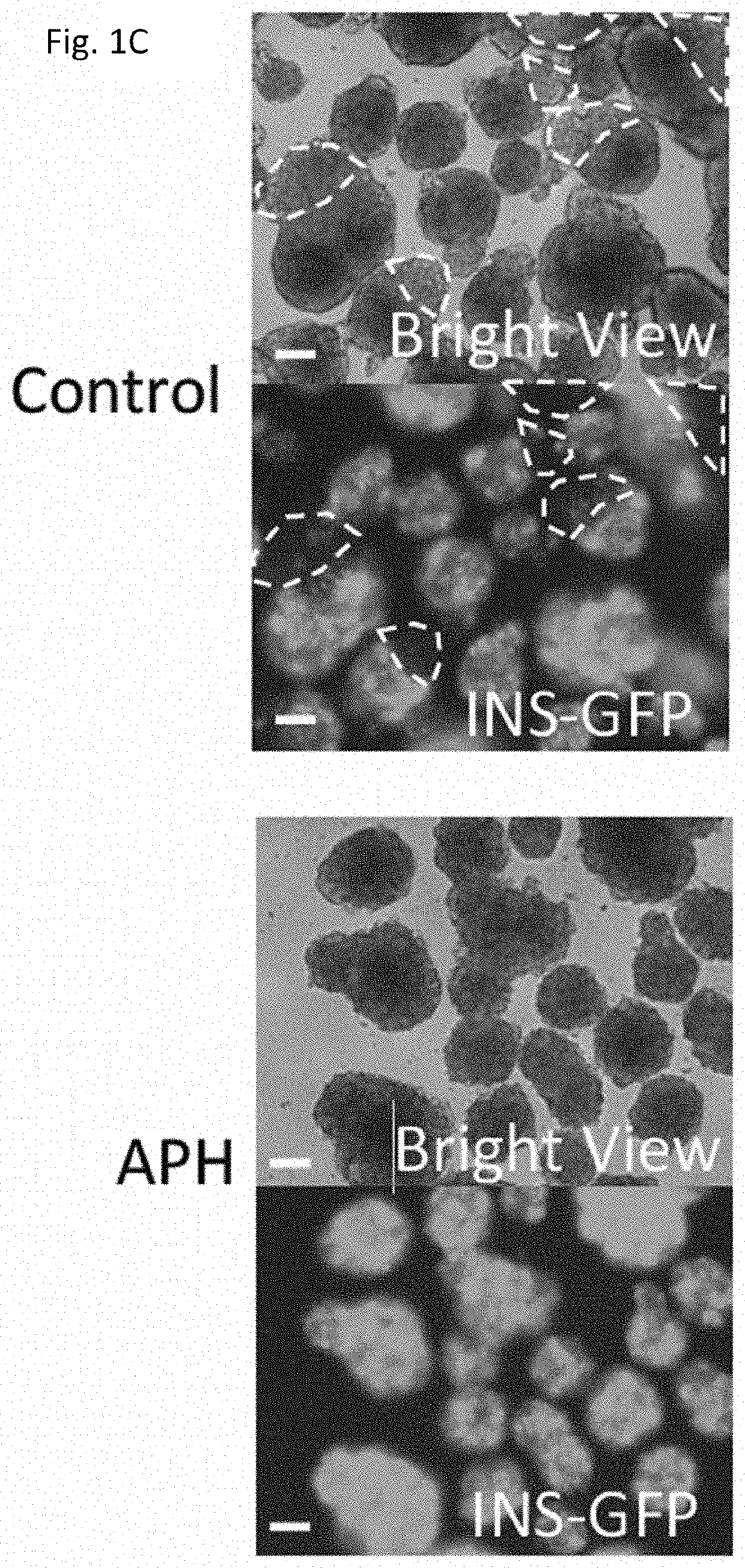Methods to induce terminal differentiation in stem cells by interfering with DNA replication, methods of inducing pancreatic differentiation, and differentiated cells obtained thereof
a terminal differentiation and stem cell technology, applied in the field of terminal differentiation in stem cells by interfering with dna replication, methods of inducing pancreatic differentiation, and differentiated cells obtained thereof, can solve the problems of limited number of donors, logistically complex obtaining islets from organ donors, and huge burden on the affected, so as to prevent and treat diabetes
- Summary
- Abstract
- Description
- Claims
- Application Information
AI Technical Summary
Benefits of technology
Problems solved by technology
Method used
Image
Examples
example 1
and Methods for Examples 2-10
Human Pluripotent Stem Cell Culture
[0138]Human pluripotent stem cells were cultured and maintained in feeder-free plates with stemflex medium as described. Three cell lines were involved in this study as shown in Table 2: MEL1 is human embryonic stem cell line; 1023A is a human induced pluripotent stem cell line reprogrammed from a skin fibroblast biopsied of a healthy control; and 1018E is a human induced pluripotent stem cell line reprogrammed from a skin fibroblast biopsied from a female type 1 diabetes patient. All human subjects research was reviewed and approved by the Columbia University Institutional Review Board, and the Columbia University Embryonic Stem Cell Committee.
Beta Cell Differentiation from Human Pluripotent Stem Cells
[0139]Beta cells differentiated from human pluripotent stem cell lines as described in Example 2 (Sui et al., 2018b). Indicated compounds that function as cell cycle inhibitors were added individually from day 15 to day 2...
example 2
Differentiation of Pancreatic Beta Cells
[0149]After 95%-100% confluence of hiPSCs was achieved, beta cell induction was initiated by using combinations of growth factors and small molecules. The differentiation steps are summarized in Table 1 (i.e., definitive endoderm induction, primitive gut tube induction, posterior foregut induction, pancreatic progenitor induction, pancreatic endocrine progenitor induction, and pancreatic beta cell induction), At the pancreatic progenitor stage, cells were cultured as organoids using AggreWell 400 6-well plate to promote cell to cell interaction.
[0150]The following steps were followed to obtain the definitive endoderm stage:
Materials
[0151]STEMdiff™ Definitive Endoderm Differentiation Kit, supplement A and supplement B (cat. No. 05110, STEMCELL Technologies)
Washing Medium (see recipe)
Primitive Gut Tube Stage Medium (see recipe)
Posterior Foregut Stage Medium (see recipe)
Pancreatic Progenitor Stage Medium (see recipe)
Cluster Medium (see recipe)
Agg...
example 3
n of DNA Replication by Aphidicolin Increased the Purity of Stem Cell Derived Beta Cells
[0224]Aphidicolin (APH), a DNA polymerase inhibitor, was used to inhibit DNA replication (Koundrioukoff et al., 2013). APH was added during the differentiation from day 15 (pancreatic progenitor cell (PPC) stage) until day 27 (pancreatic beta cell (PB). Different time points of treatment at early stage (d15-d20), late stages (d20-d27) and whole duration of differentiation (d15-d27) were evaluated by the percentage of C-peptide positive cells, and C-peptide and NKX6.1 double positive cells derived at the end of differentiation at day 27. Addition of APH at all indicated stages increased the proportion of C-peptide positive cells, and C-peptide and NKX6.1 dual positive cells (FIG. 1A). The most effective differentiation toward C-peptide and NKX6.1 positive cells occurred when APH was added from day 15 to day 27 (FIG. 1B). The insulin expressing cells were evenly distributed in the islet-like cluste...
PUM
| Property | Measurement | Unit |
|---|---|---|
| temperature | aaaaa | aaaaa |
| temperature | aaaaa | aaaaa |
| temperature | aaaaa | aaaaa |
Abstract
Description
Claims
Application Information
 Login to View More
Login to View More - R&D
- Intellectual Property
- Life Sciences
- Materials
- Tech Scout
- Unparalleled Data Quality
- Higher Quality Content
- 60% Fewer Hallucinations
Browse by: Latest US Patents, China's latest patents, Technical Efficacy Thesaurus, Application Domain, Technology Topic, Popular Technical Reports.
© 2025 PatSnap. All rights reserved.Legal|Privacy policy|Modern Slavery Act Transparency Statement|Sitemap|About US| Contact US: help@patsnap.com



